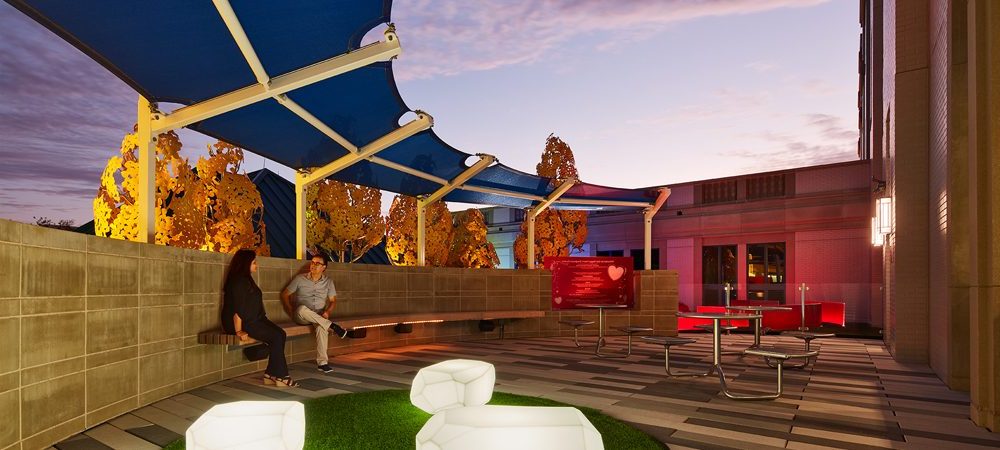Trend Spotlight: Rooftop Gardens – Healing Through Design

The trends we’re highlighting throughout our Trend Spotlight series provide insight into how clients are getting creative when providing innovative solutions and memorable experiences for end-users. With healthcare organizations continuing to move toward more sustainable business models, the popularity of rooftop gardens is likely to continue to grow. Today, we’re highlighting these unique outdoor spaces and the benefits they bring to those who need them most.
Through evidence-based design, rooftop gardens promote the health and well-being of patients and visitors, in addition to tailored amenities for specific patient populations – contributing to the reduction of staff stress and absenteeism and providing overall restoration of green space in urban environments. As Associate and Discipline Lead of Dunaway’s Planning + Landscape Architecture team, Anita Beard, PLA, ASLA, notes, “providing a place to retreat outside of the hospital room as a family is important. Privacy, safety, color, textures, and inclusiveness are key components in creating play and garden areas that will be engaging and exciting for both children and adults.”
Providing a place to retreat outside of the hospital room as a family is important. Privacy, safety, color, textures, and inclusiveness are key components in creating play and garden areas that will be engaging and exciting for both children and adults.
”While these spaces may be innovative and engaging, they aren’t exactly new to the healthcare industry. Florence Nightingale, best known as the founder of modern nursing was a champion of outdoor spaces such as these, and in the 19th century, hospital gardens were considered an important part of the therapeutic regimen. But don’t just take Florence’s word for it. Studies have shown that a rooftop garden demonstrates many environmental, visual, and societal benefits. Let’s break them down:
- Environmental Benefits: In terms of the environmental benefits, a rooftop garden can capture as much as 75% of water run-off. Why is this important? Because this minimizes the amount of nitrogen entering the watershed, according to water quality tests. Additionally, there are temperature and energy benefits to these locations. The average rooftop temperature can be lowered by as much as 40 degrees with a garden compared to a traditional blacktop roof in the summertime heat, in addition to allowing for the overall building’s energy to be reduced by 10% use in winter months.
- Visual + Social Benefits: The plantings and artistic elements featured on rooftop gardens provide stimulus and interest for patients, families, and guests. One such space is the Happy Heart Sculpture Garden at Cook Children’s Medical Center in Fort Worth, Texas. Dunaway’s Planning + Landscape Architecture team partnered with Cook Children’s to design the unique space, which wraps around the third-floor roof of the Medical Center’s South Tower and offers dynamic views from patient rooms. Surrounded by artwork, the garden features sculptures designed to represent the physical, mental, and spiritual components contributing to a “Happy Heart.”
In contrast to the hospitals themselves, unique spaces such as these provide a reprieve from the stress families may be encountering during their hospital stay and feature artistic elements designed to give patients and healthcare workers a place to think, pray, or even to grieve. Beyond the chaos of the white walls, these unique gardens provide a breath of fresh air and a much-needed respite from all that’s going on inside.